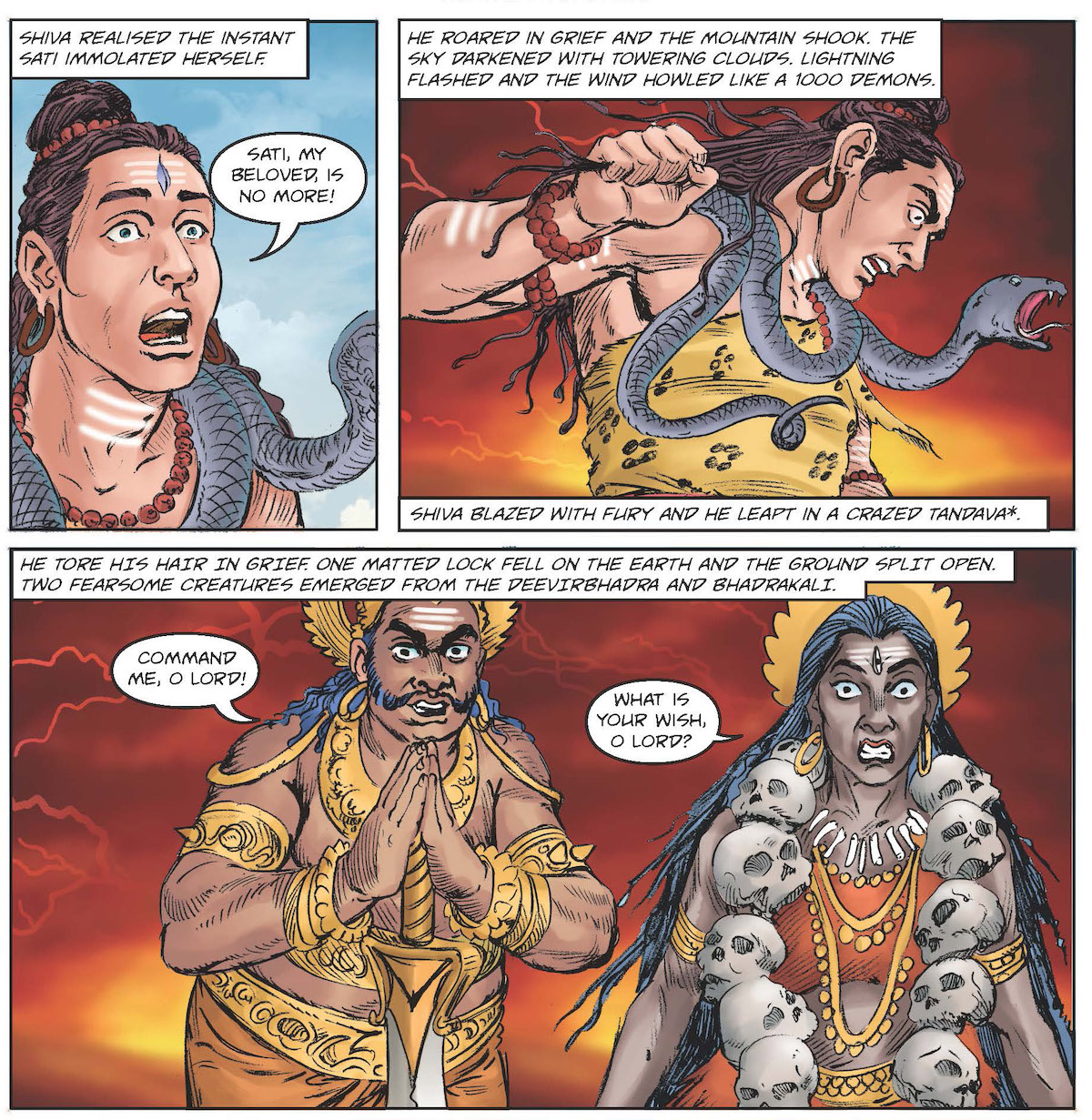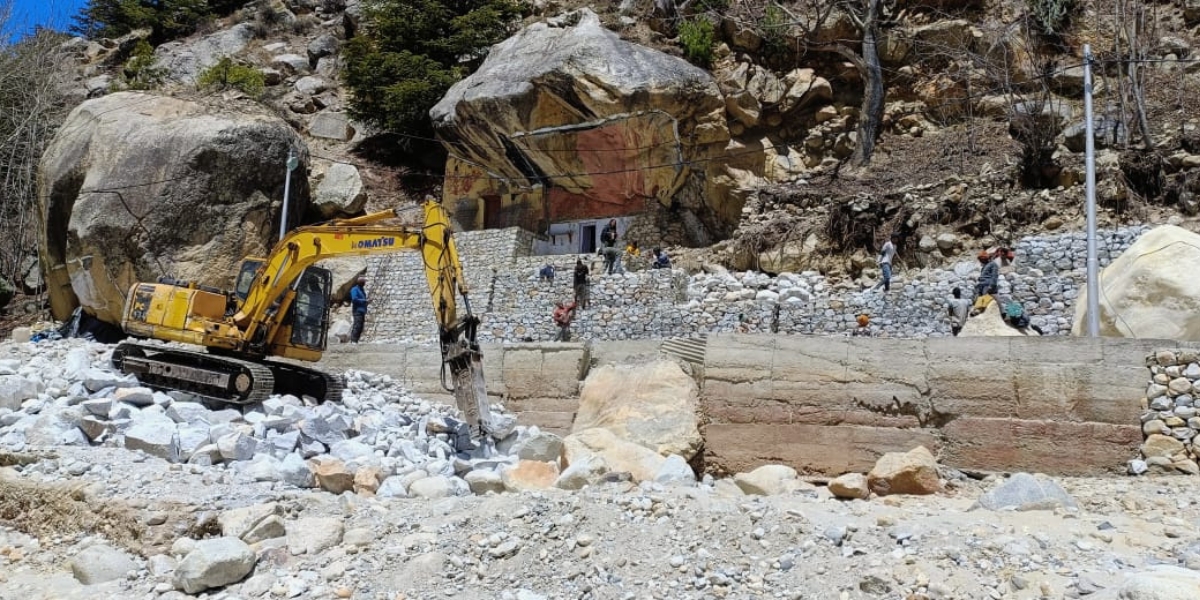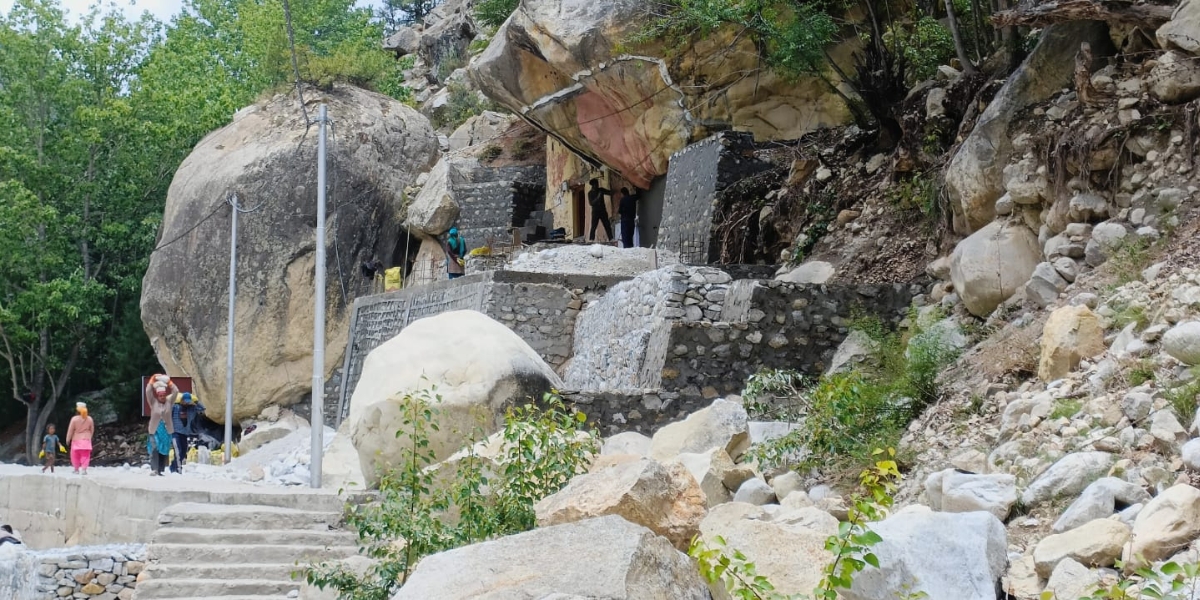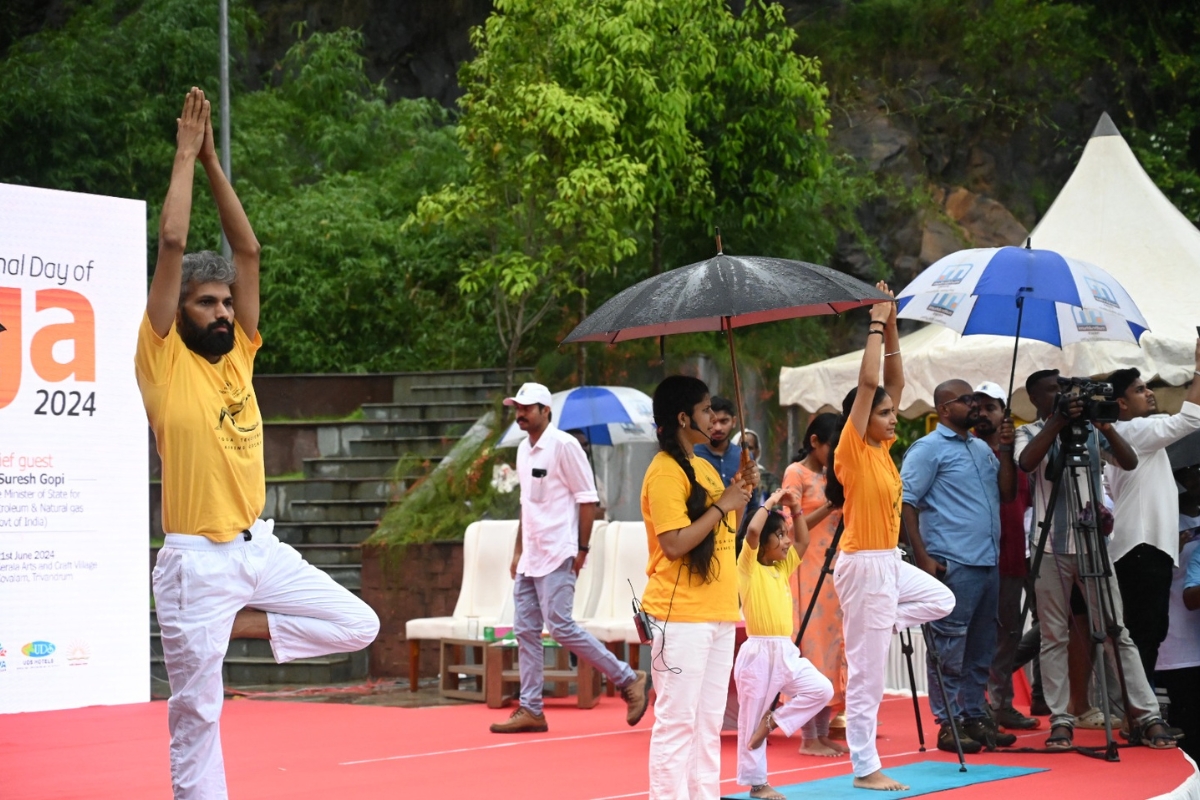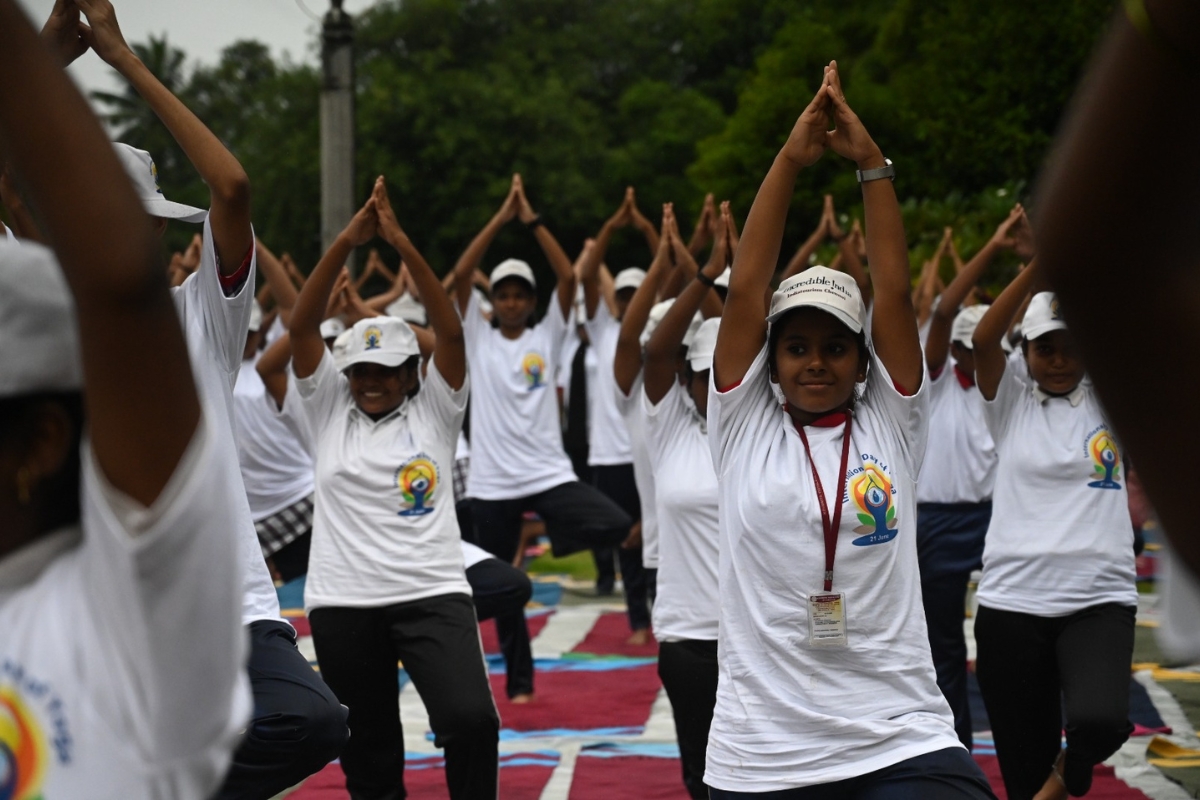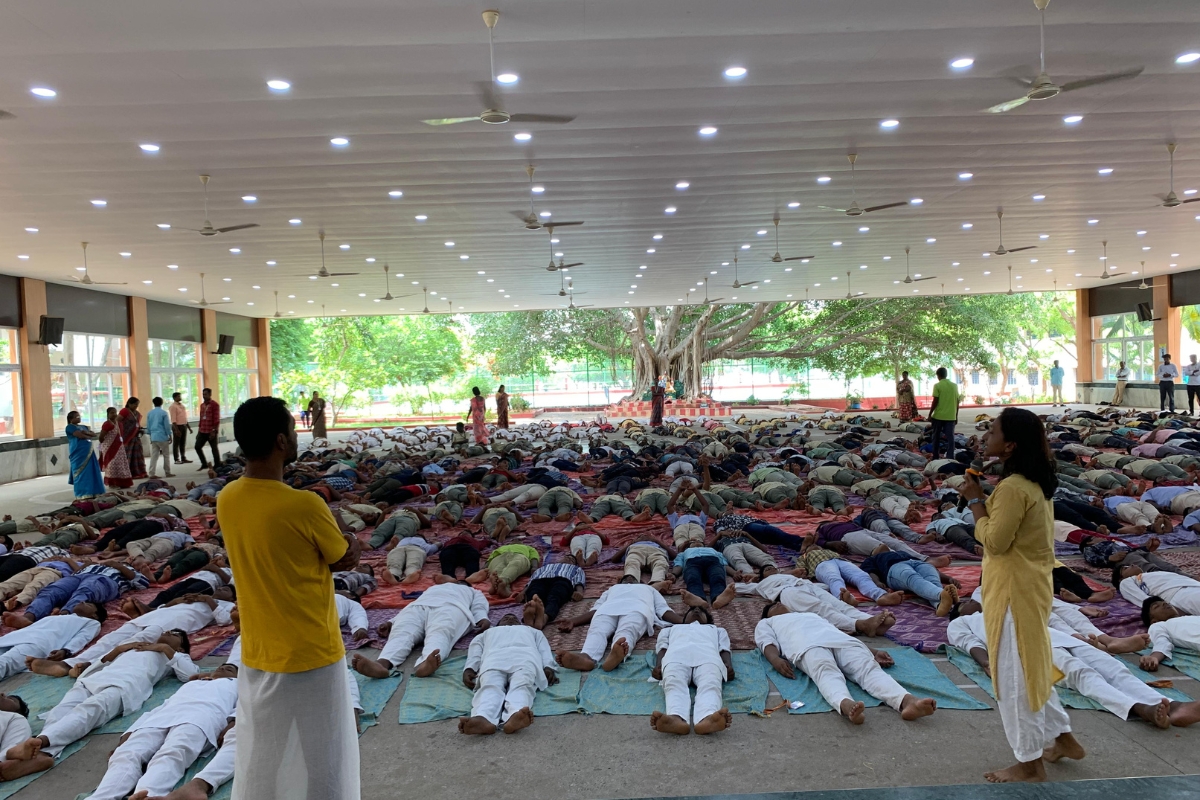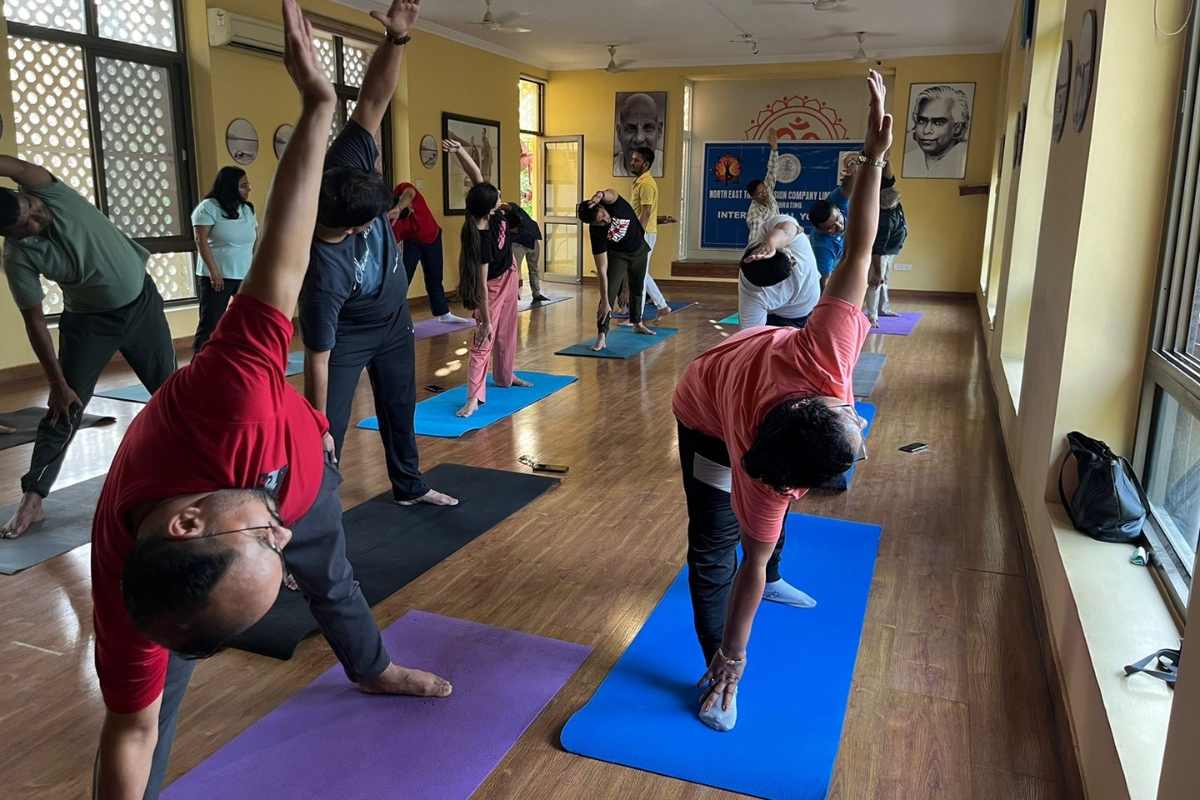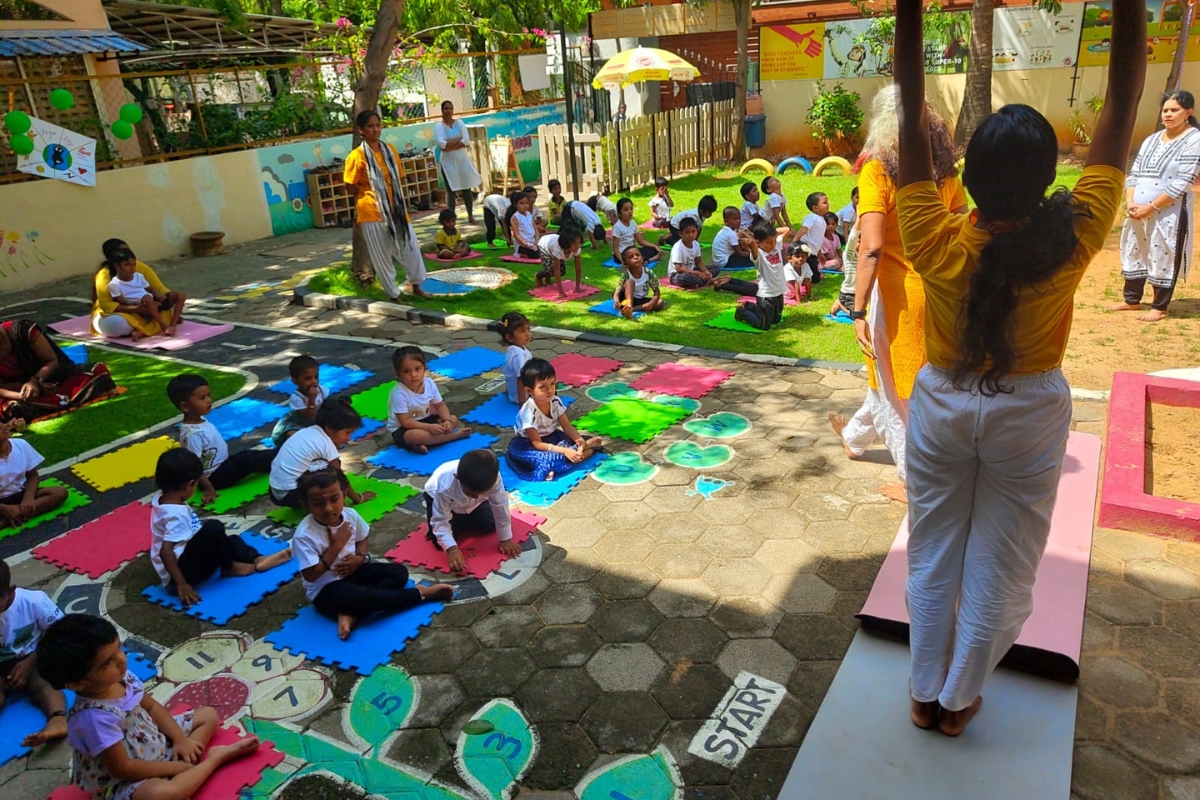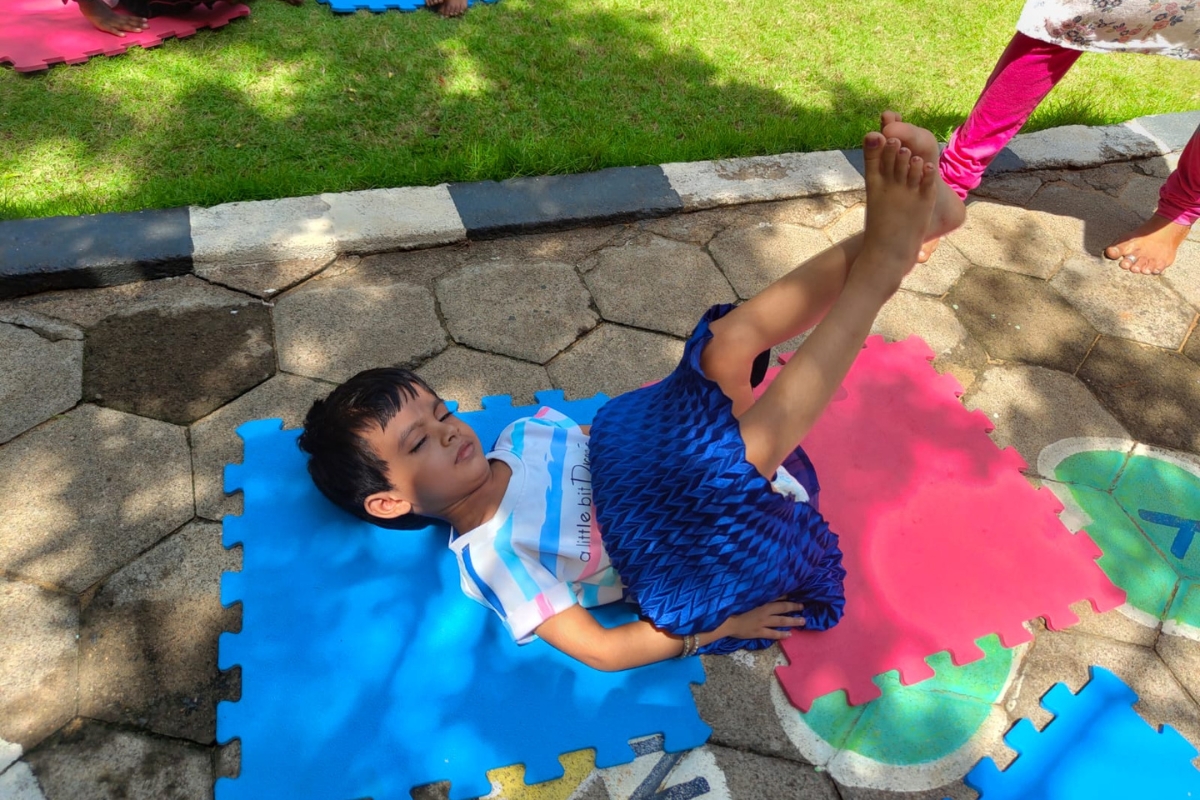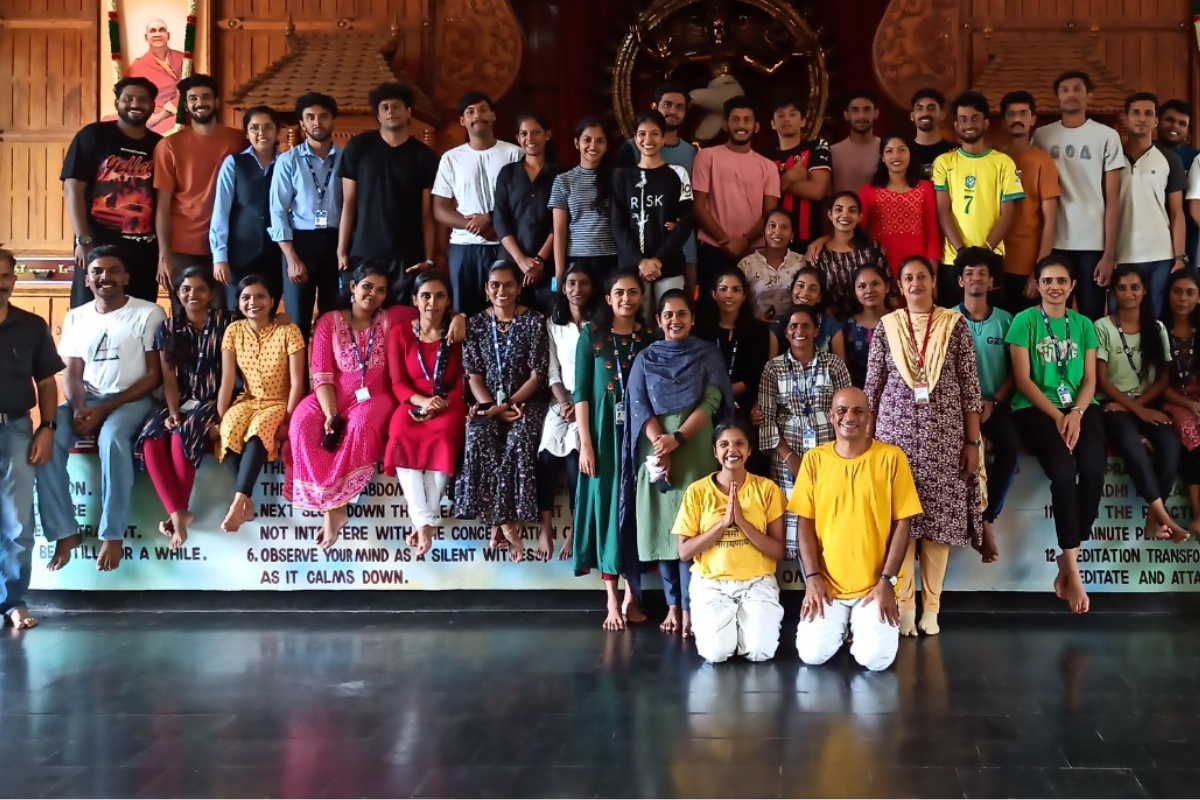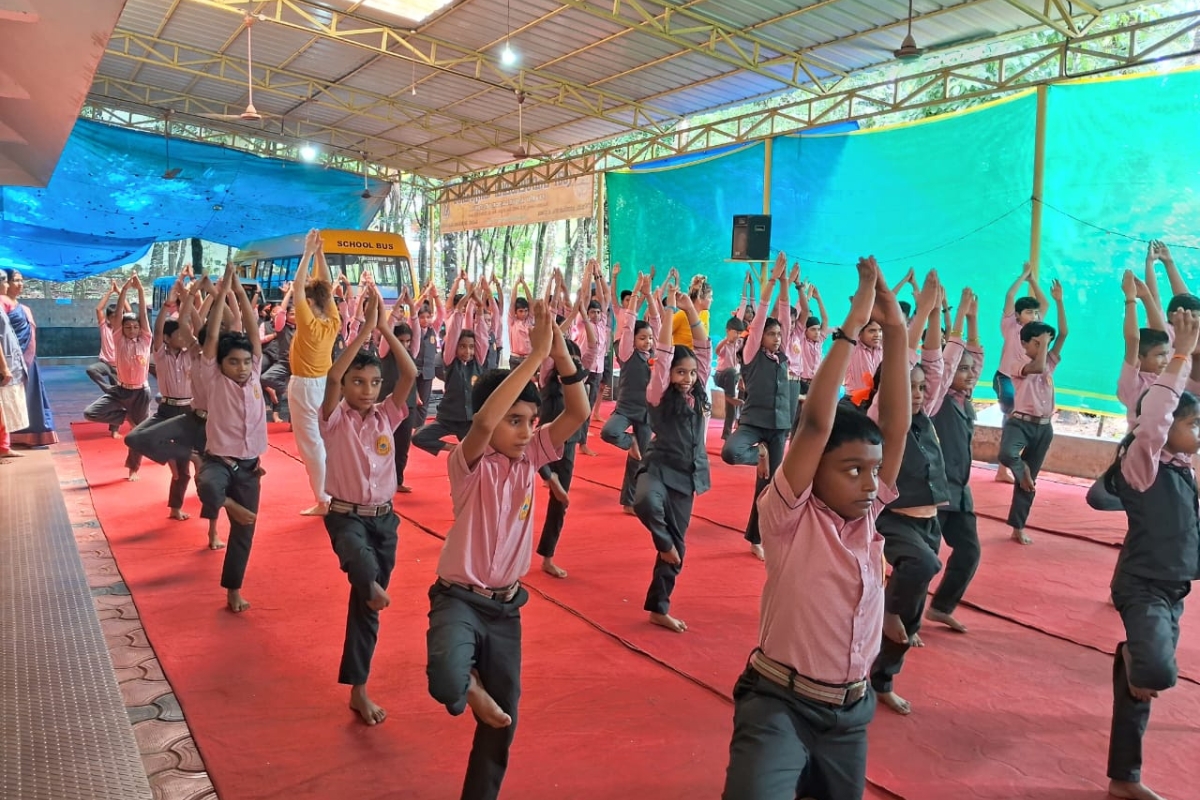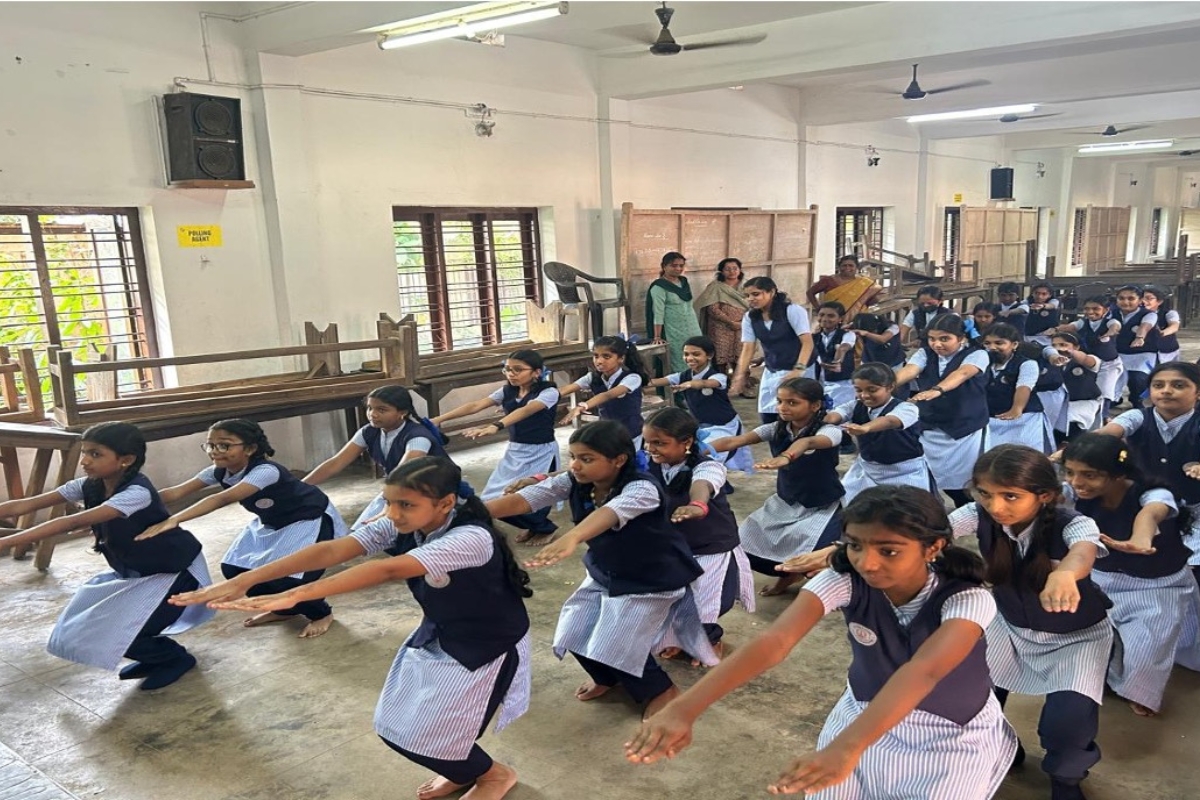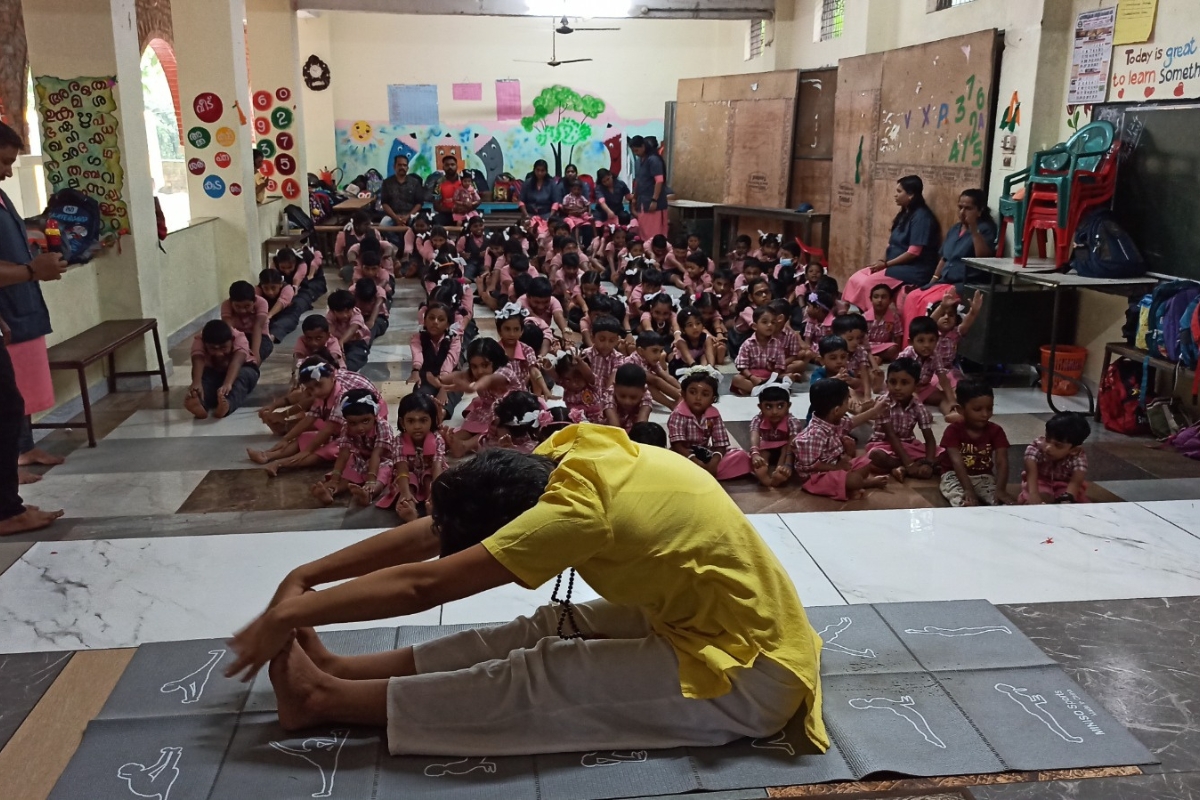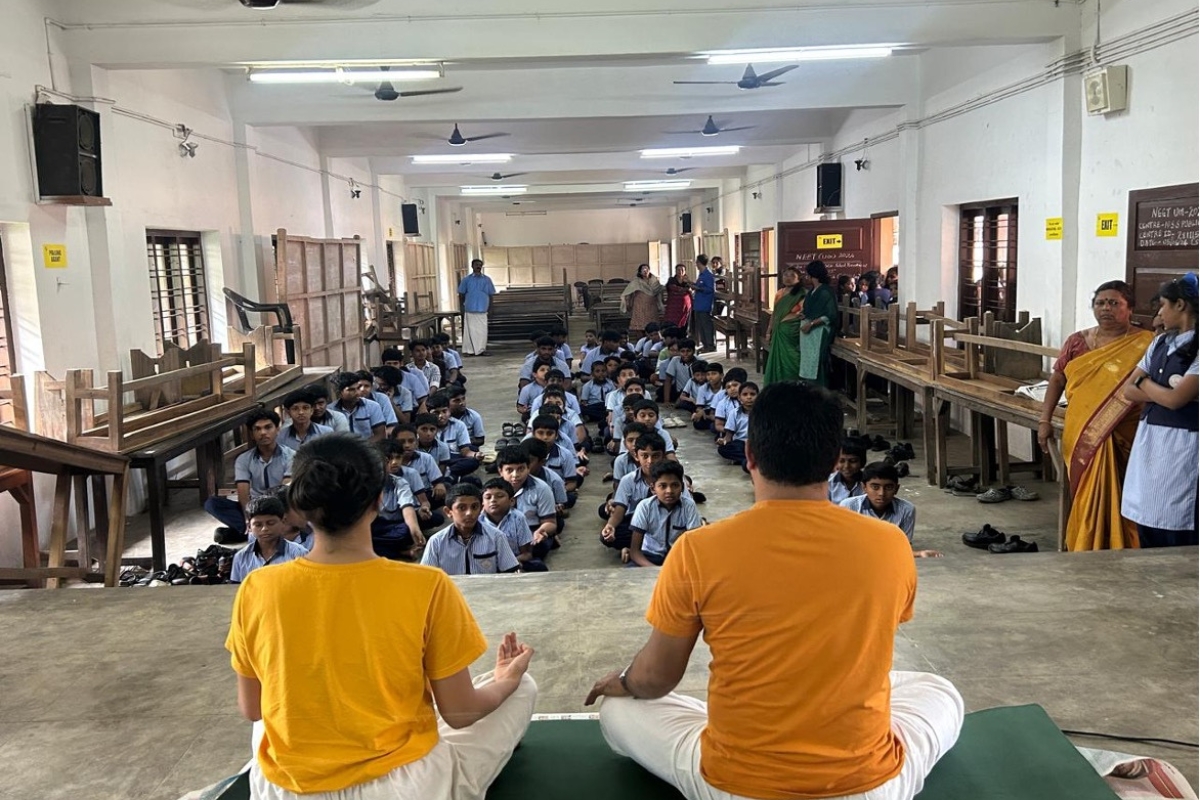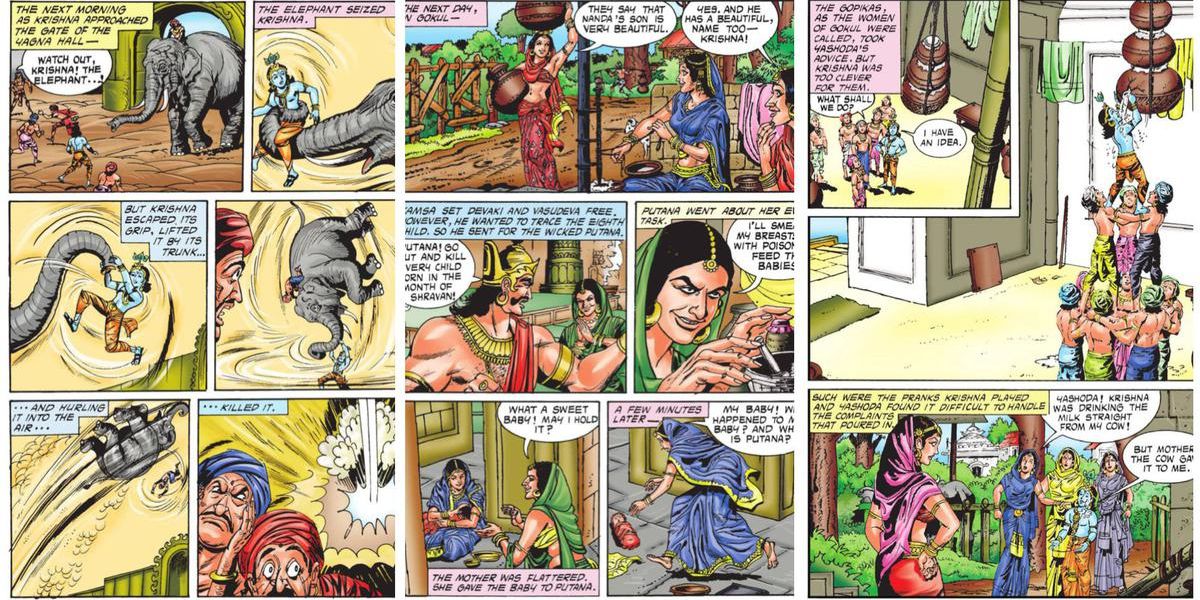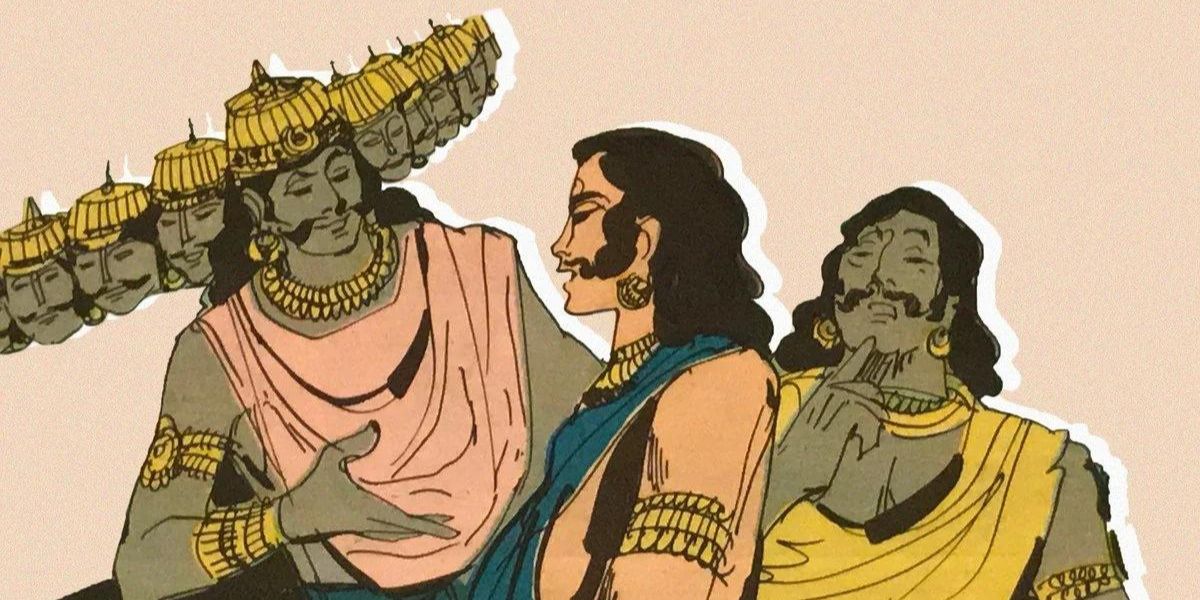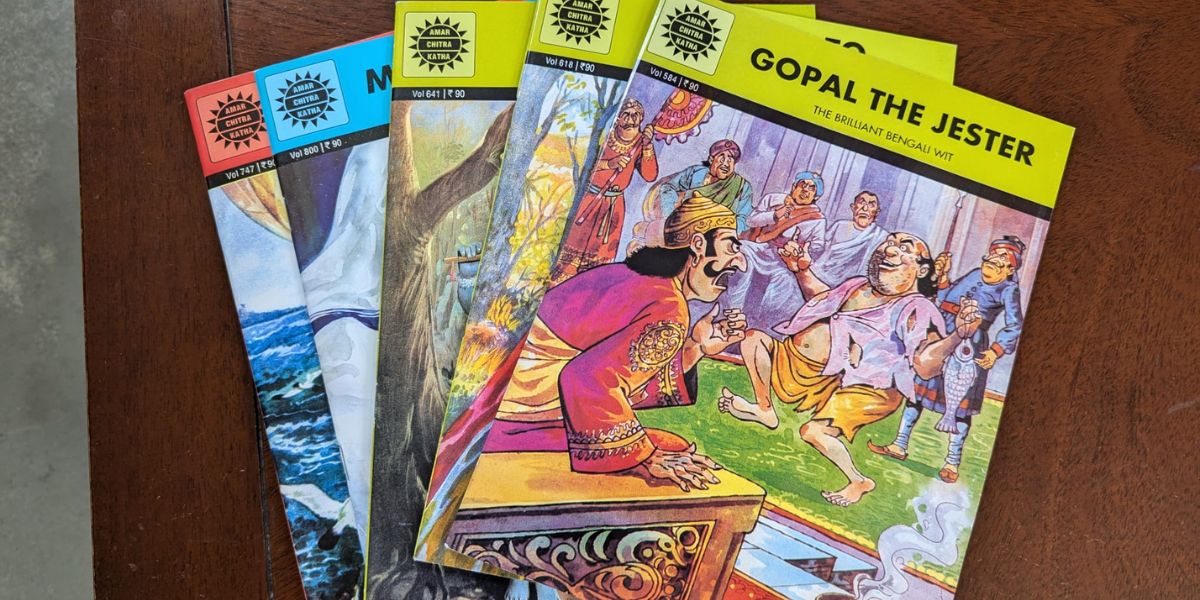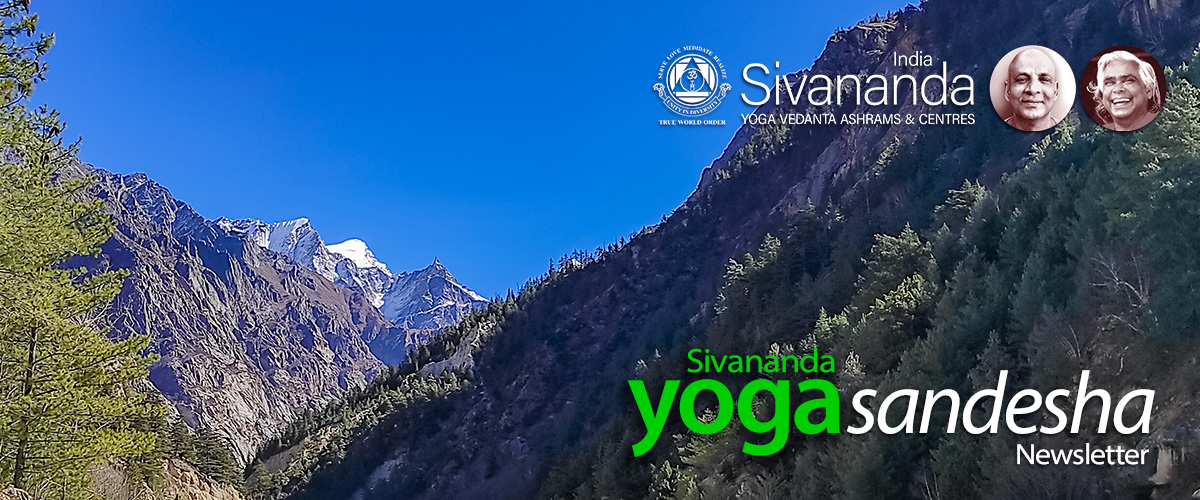
Om Namah Sivaya
Blessed Self,
Most of the energy of the organisation went into the preparation of International Day of Yoga programmes. All of our ashrams and centres had a great success on June 21 imparting the knowledge of Master and Swamiji, not only in our own locations but also in many prominent places within the community.
Participation in our Yoga Vacation and Ayurveda programmes remains very strong, even during the off season in the South Indian ashrams, and the Netala ashram remains fully booked with reservations. We are glad to see more enthusiasm from both Indian and International students for the upcoming high season. Such interest in the teachings not only keeps us humble but motivates us in our own practice and karma yoga, to keep our locations clean and sattvic for our guests.
May Master and Swamiji’s blessings be with you always.
Pranams,
Sivananda Yoga Vedanta Ashrams & Centres, India
Amar Chitra Katha
Do you have a story? Have you noticed that story change over the span of your life? Has it become more reliable, or less so? Can we be sure of what is truth, even in our own story? Truth in storytelling is an old question with many interesting answers. Our story is in a sense an agreement that we make with ourselves and as our understanding changes, often the story transforms as well.
Storytelling is as old as humanity itself. Every life has a story, and every story has a hidden message. Spiritual teachers in India have always used stories to explain concepts and teachings. We may have difficulty remembering the teachings but never a good story. Stories help the teachings come to life and make them feel fresh and vital. The stories may be ancient, but they never get old!
Spiritual stories also help us to understand that there are many ways to live with wisdom. The role of the saint, Swami, or renunciate is better understood by hearing these stories. We take inspiration from those who are detached from the everyday, from worldly desires, who live remaining focused on helping others. In our culture which increasingly worships celebrity, power, achievement, and number of followers, stories slow us down and remind us of what is truly important.
In this issue of Yoga Sandesha we explore one of Swamiji’s favourite stories, discover the impact of comic books on keeping the ancient stories alive for young people within India and abroad, and the power of storytelling as medicine. We’ll learn to practice Shakti Chalini Asana, discover food stories from across India, and hear some stories from Parvathy Baul, a practitioner, performer, and teacher of the Baul tradition from Bengal, India.
Thank you for taking the time to read Sivananda Yoga Sandesha. We hope you enjoy the newsletter and take time to reflect on your practice. As usual, please feel free to reach out to us with your thoughts and feedback: [email protected]
Photo Update:
Cave Construction in Gangotri
The rebuilding of Swamiji’s cave in Gangotri is now well underway. The work experienced a delay due to the start of the Char Dham Yatra season and very packed Himalayan roads. The work is expected to take about four months to complete. Once finished, it will include a kitchen and space for staff to once again stay within the cave. Here are some photos of the work in progress.
Video Update:
Cave & Surroundings, Gangotri
Have a quick look at Swami Vishnudevananda’s cave, called a Guha, in Gangotri and the view from outside the cave. The ATTC students from the May 2024 batch have just finished satsang in the cave and are hearing some stories about Swamiji. The cave is currently being renovated after floods destroyed it in 2013.
Photo Update:
International Day of Yoga in Sivananda Ashrams & Centres, India
We celebrated International Day of Yoga by holding events both within the Ashrams & Centres as well as in schools, corporations, and various other cultural facilities. We are grateful for the opportunities to share yoga far beyond our own locations. Some notable events included: Kerala Art and Crafts Village, Kerala Institute of Co-operative Management, Software Technology Parks of India, Vivekananda Vidyalayam, Eco Park Madurai, Mahatma Montessori School, Chief Post Master Office, Kerala, Accountant General’s Office, Chennai, Power Grid Corporation, Delhi, and many others. Here are a collection of photos from some of the events.
Photo Update:
International Day of Yoga in the Indian Media
Our programmes and locations were featured in several publications (The Hans India, Dwarka Express, and Dainik Jagran) in honour of International Day of Yoga. Take a look!
Upcoming Courses:
Learn, Practise & Grow with Us!
Teachers’ Training Course (TTC)
- July 21 to August 17, 2024,
Uttarkashi, Himalayas - Aug 18 to Sep 14, 2024,
Gudur, Andhra Pradesh - Sept 15 to Oct 12, 2024,
Uttarkashi, Himalayas
For more details, click here
Panchakarma Detoxification Programme (PDP)
- July 16 to July 30, 2024,
Neyyar Dam, Kerala - Aug 1 to Aug 15, 2024,
Neyyar Dam, Kerala
For more details, click here
Sadhana Mandalam
- Aug 1 to Sep 9, 2024,
Neyyar Dam, Kerala
For more details, click here
Sadhana Intensive (SI)
- Oct 16 to 29, 2024,
Uttarkashi, Himalayas
For more details, click here
Links/Research: Storytelling as Medicine
Explore research involving storytelling and storylistening in the context of health care and the effects for caregivers and carereceivers here:
Spiritual Calendar
July 2 – Ekadasi
July 5 – New Moon
July 14 – Master’s Mahasamadhi
July 17 – Ekadasi
July 21 – Full Moon
July 21 – Guru Poornima
July 31 – Ekadasi
My Story:
The Way I Learned from Swamiji, by Prahlada
Swamiji always reminded us that we were using public money and to be responsible and accountable for it.
Once, we travelled to Tirumala for the Darshan of Lord Venkateswara. Swamiji wanted me to buy something. Being very young and in my home state, Andhra Pradesh, I was excited to speak my mother tongue, Telugu, and I happily purchased what Swamiji had asked for and returned to the vehicle. After driving for about 2 kilometres Swamiji asked whether or not I had obtained a receipt. I answered no; I forgot Swamiji, that is all. Swamiji began scolding me, on and on, saying how irresponsible I am. I said sorry, but that was not enough. Swamiji stopped the vehicle and made me walk the two kilometres back, get the receipt and return with it, all while Swamiji waited in the vehicle. There was no further discussion, but I learned a great lesson that day, to take a receipt for everything, whether a small or large expense.
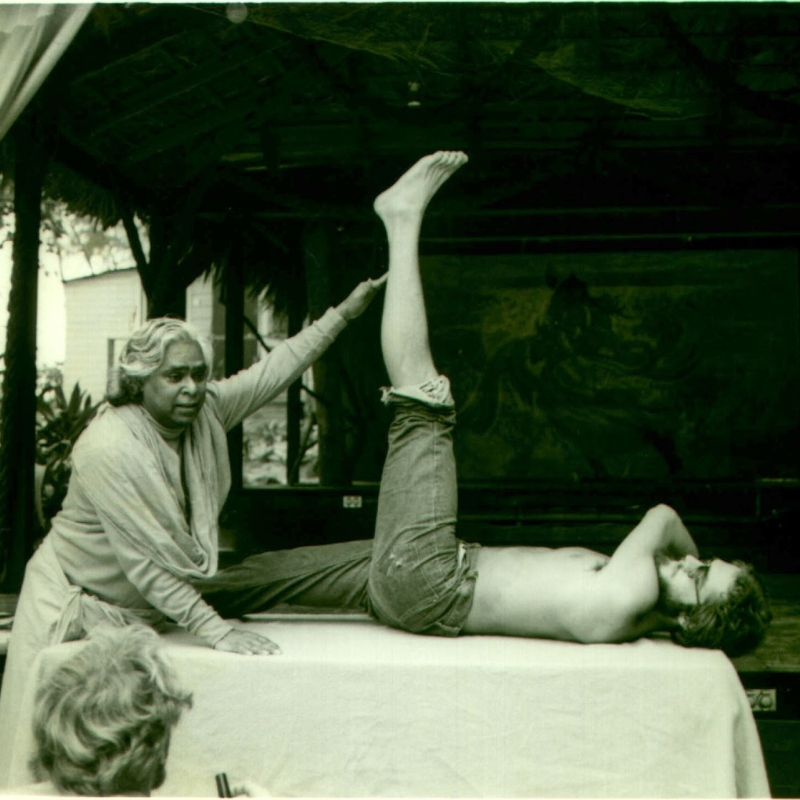
Teachings Excerpt:
Swami Vishnudevananda’s Story of a Lion, a Python, Mice, and Honey
Swamiji enjoyed telling stories and was particularly fond of this Vedantic story of a lion, a python, mice, and honey, told here in our own words.
A man is walking through a remote jungle, enjoying the beauty of nature, birds singing, and the smell of the flowers. As he struggles to make his way through the deep green vegetation, he hears the unmistakable sound of an animal running with great speed. The sound grows louder and closer, and the man’s heart jumps into his throat and turns around to see a huge, and very hungry lion running towards him. Fearing for his life, he runs with all his power, as fast as his legs will carry him, leaping over tree trunks and the thick bushes in his path. Suddenly, the man notices an old well and quickly jumps into it to escape the lion. As he falls into the dark well, he grabs onto a loose rope hanging inside the well.
Clutching onto the rope provides him with a moment of relief, as he wipes the sweat from his brow. The lion’s roar subsides and he is able to catch his breath. The man looks around, his eyes adjusting to the darkness. He hears a sound below and, to his horror, notices a giant python at the bottom of the well, its mouth wide open, waiting for him to fall into it.
His mind races to find a solution to this inescapable situation. As if this wasn’t enough, the man looks up and notices two mice, one white and one black. The mice are gnawing on the rope above him. The man then looks up and suddenly sees two mice, both gnawing away at the rope. The python hisses from below and the hears the lion let out an impatient growl above. He tries to shake the rope to dislodge the mice. In doing so the rope swings and the man bumps into the wall of the well. He feels something sticky on his arm and notices a honeycomb on the wall.
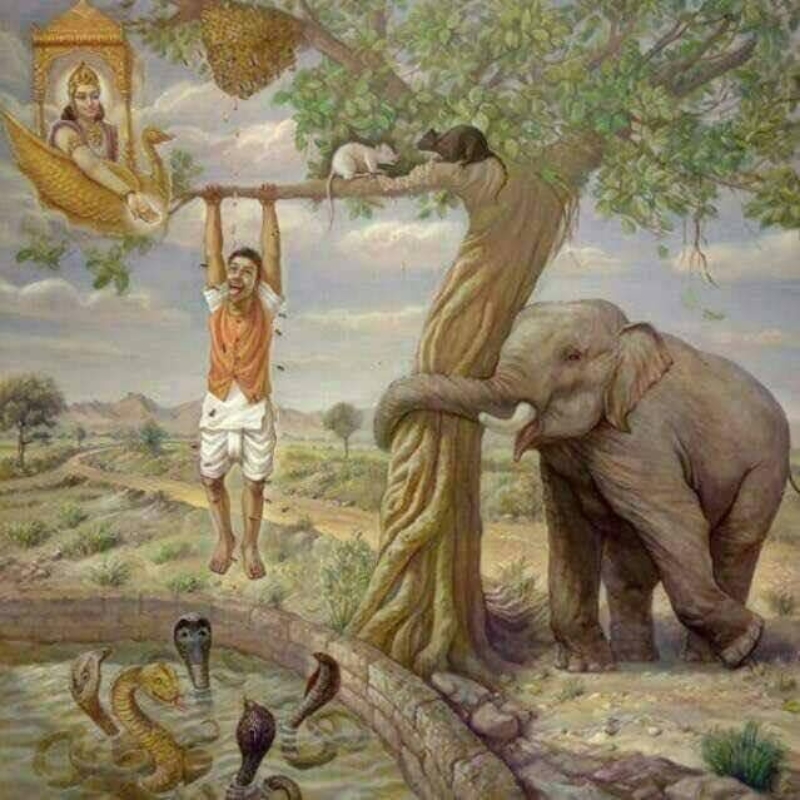
The honeycomb, within arms reach, was dripping with golden honey. The man reaches his finger into the honey comb, and tastes the honey. As he savours the honey, the man forgets his predicament. He forgets the lion, the python, and the two mice chewing at the rope.
Swamiji would then ask us to contemplate the following; imagine the lion to be death, always looming above us; think of the snake as the grave, which we all will inevitably face; the black and white mouse to be night and day, slowly nibbling away at our lives, in this case the rope. We never know exactly when it will give way. And finally, the honey as this life, which through its momentary sweetness, makes us forget the reality of what awaits us.
Practice and Teaching Tips:
Shakti Chalini Asana | Nerve Power Stimulation
Shakti means “energy” and chalani means “to churn”. Shakti Chalini is a subtle practice introduced during our Sadhana Intensive Course. However, Swamiji was particularly fond of an asana that he also referred to as Shakti Chalini. This asana facilitates the stirring of shakti, the kundalini energy within us. It is also an excellent exercise for the legs. In fact, if we practice a lot of seated meditation or pranayama–especially if seated in padmasana, the lotus posture–shakti chalini places the thighs in an outward rotation which feels very relieving.
Before attempting shakti chalini, one should practice the butterfly and should be able to do bhadrasana quite easily, with the soles of the feet together and the knees reaching the floor. To come into shakti chalini from bhadrasana, keep the soles of your feet together, reach the hands between your calves and thighs and slide them under your ankles. Hold the toes and try to turn them down to the floor while pulling the heels up towards the abdomen and above the toes. Be sure not to strain the knees while attempting shakti chalini. It may take a longer time of daily practice to become comfortable with this asana. Just do a little bit each time, but incorporate this regularly in your practice. Leg exercises are generally practiced after balancing and before standing up for Pada Hastasana and Trikonasana.
All best wishes for your inspired practice. Enjoy!

Nutrition:
Mapping Food Stories from India
Food Forward is a non-profit initiative which offers a food map of India, sharing stories about India’s incredible culinary complexity. Read, watch, and listen to stories of ingredients and cooking from each state, including a podcast on “Mangoes and Mythology”. Foodies will enjoy exploring this site!
www.foodforward.in/food-stories
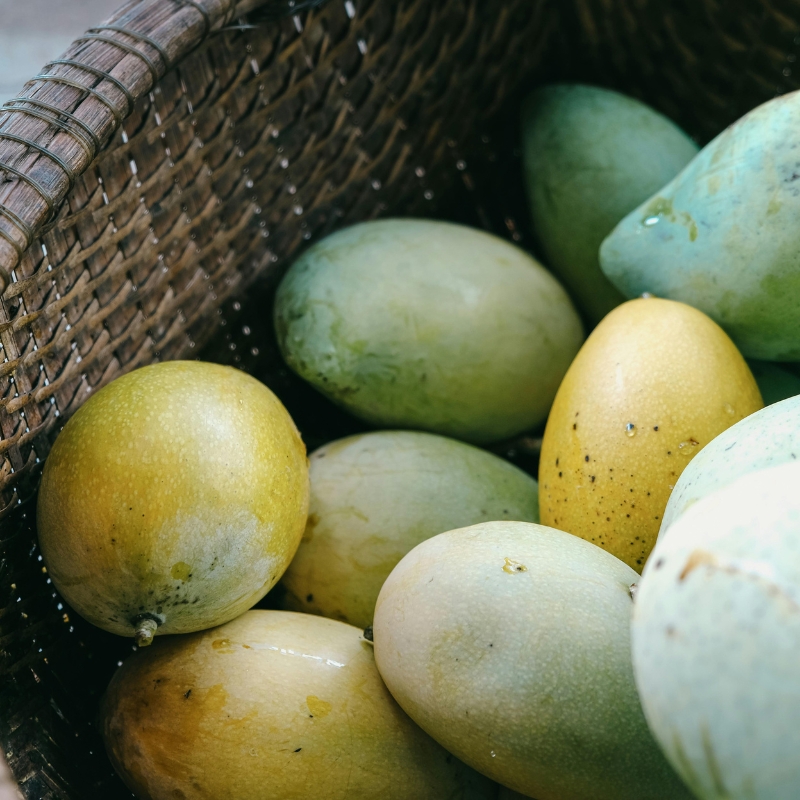
From the Community:
The Transformative Power of Amar Chitra Katha
My Childhood Journey through Indian Mythology and History, by Vikram Chadalawada
Growing up in India, my childhood was filled with vibrant tales of gods, heroes, and historical figures, all thanks to the cherished comic book series, Amar Chitra Katha. These comic books were more than just a pastime; they were a window into the rich tapestry of Indian culture, mythology, and history, shaping my understanding and appreciation of my heritage.
I was hooked when I picked up my first Amar Chitra Katha. The stories were captivating, the artwork vivid and colourful, and the narratives filled with deep spiritual messages. As a voracious reader, I eagerly devoured each issue, often losing myself in the adventures of mythological characters like Krishna, Rama, and the Pandavas, as well as historical figures such as Rani of Jhansi and Mahatma Gandhi. And then there were the lighter Jataka Tales, Tales of Nasiruddin Hodja and Raman of Tenali, Gopal the Jester and Tinkle series which were both witty and humorous but equally binge-worthy.
Amar Chitra Katha’s core focus on Indian mythology and culture provided me with a profound connection to my roots. The series meticulously portrayed the epic tales from the Mahabharata and Ramayana, the intriguing stories of the Puranas, and the moral fables of the Panchatantra. Each comic book blended entertainment and education, offering lessons in bravery, wisdom, and righteousness.
The deep spiritual messages embedded in these stories resonated with me and many other children of my generation. The tales of valour, sacrifice, and devotion were not merely stories but life lessons that instilled values and ethics. Characters like Bhishma, who epitomized duty and loyalty, and Arjuna, who symbolized the pursuit of righteousness, became role models.
The imagery and scriptwriting in Amar Chitra Katha were equally inspiring. The illustrations brought the stories to life, with detailed depictions of ancient palaces, battlefields, and divine realms. The dialogues were crafted with care, balancing simplicity for young readers with profound philosophical insights. This combination made the comic books not only interesting but also educational.
A heartwarming memory from my childhood is intertwined with these beloved comic books. Every time I visited my childhood doctor’s clinic, the pharmacy next door had the latest collection of Amar Chitra Katha for sale. The kind-hearted pharmacist would lend me a few issues while I waited for the doctor to see me. This gesture was not just generous but also profoundly comforting. Those moments spent reading about the exploits of my favourite heroes made the wait enjoyable and transformed a visit to the doctor into an eagerly anticipated adventure.
Back in the day, these comics were a significant part of children’s lives and kids used to borrow these books from a local library or have them bound into thick volumes, providing a wholesome alternative to the then-limited entertainment options unlike today’s handheld devices. They encouraged reading, sparked curiosity about our history, and fostered a sense of pride in our cultural heritage. For me, Amar Chitra Katha was a gateway to the past, a source of inspiration, and a treasured part of my childhood.
As I reflect on those formative years, I realize how much Amar Chitra Katha influenced my worldview. The lessons learned from those stories continue to guide me, reminding me of the values of love, service, and devotion that are integral to Indian culture. Amar Chitra Katha didn’t just change my life; it enriched it, leaving an indelible mark that I carry with me to this day.
From the Community:
Anecdotes from a Baul
Parvathy Baul Reflects on Serving the Essential
The Baul are an order of mystic singers from Bengal who are known for free and spontaneous mystical verse. The Baul embody mixed elements of Vaishnavism and Tantra, and their members are primarily Vaishnava Hindus and Sufi Muslims. Parvathy Baul is a practitioner, performer, and teacher who studied closely with two of the most respected Baul Gurus, Sri Sanatan Das Thakur Baul and Sri Shashanko Goshai. In this video Parvathy Baul addresses the gap between people’s perception and her inner truth as a sadhaka (spiritual practitioner), her Gurus and how they impacted her, the way she approached the world as a child, and her devotional service. Hope you enjoy this video podcast.
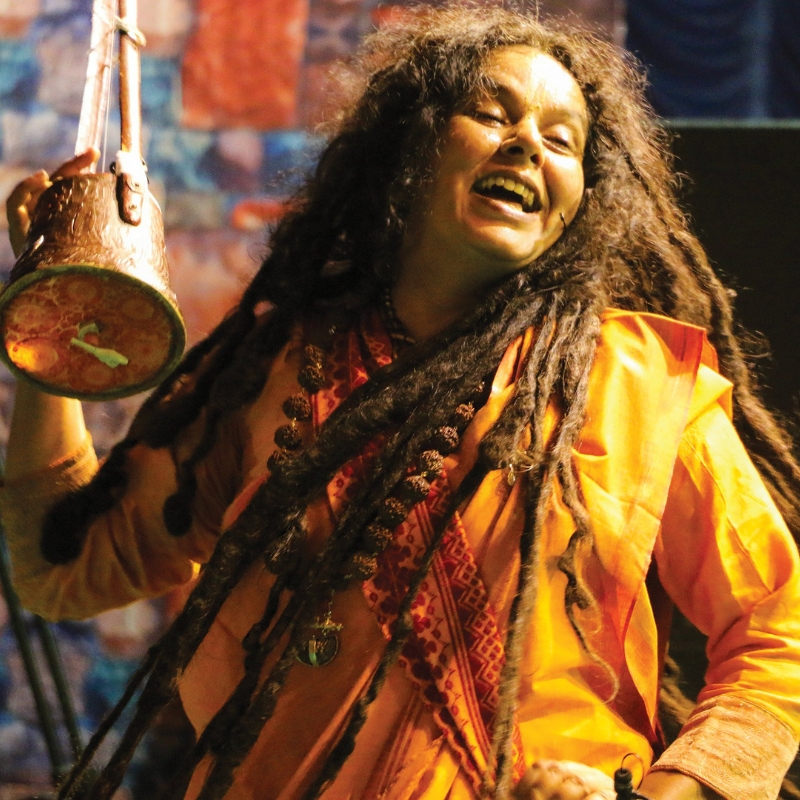
“Even if everything collapses tomorrow you will still have your clothes. If you have that, you are richer than a billionaire. With all the money they have, they cannot buy the peace you have, the freedom you have, the inner strength you have…How free you are. Understand this freedom you have, which you cannot buy. I have nothing, even so, with only this pair of clothes, I can go anywhere in the world.” -Swami Vishnudevananda

